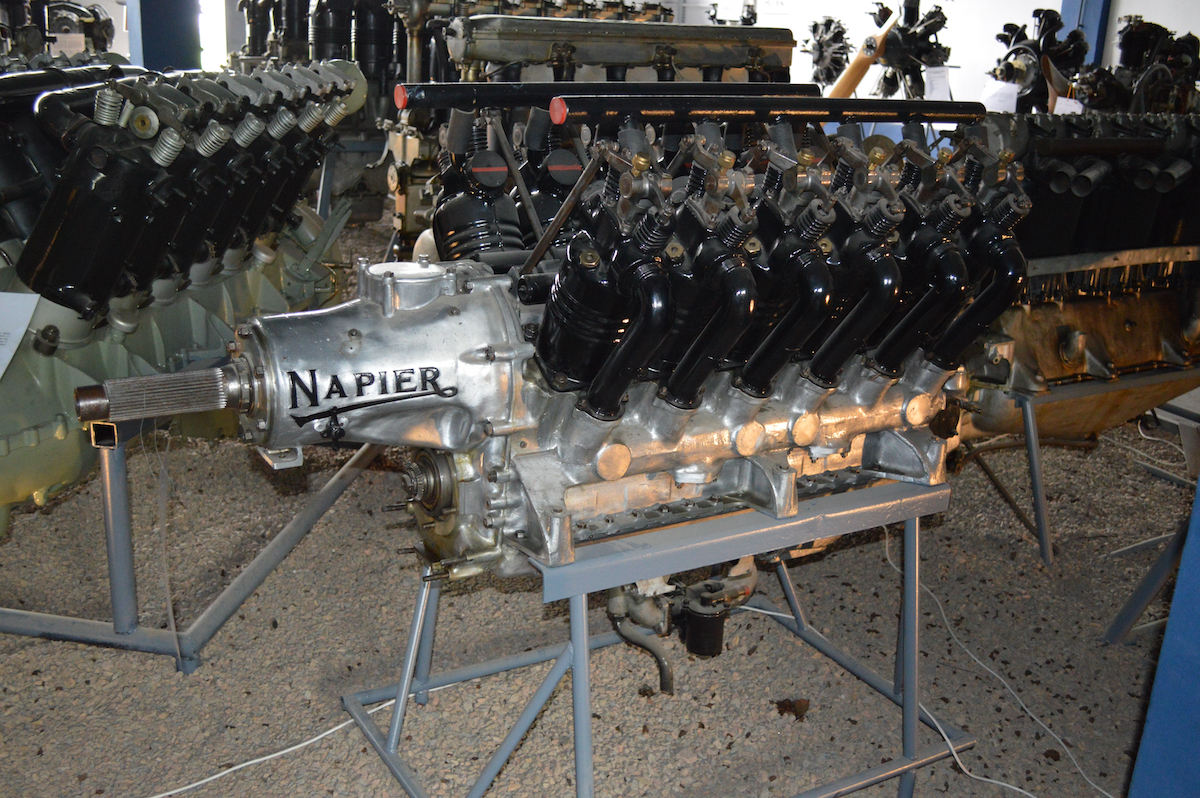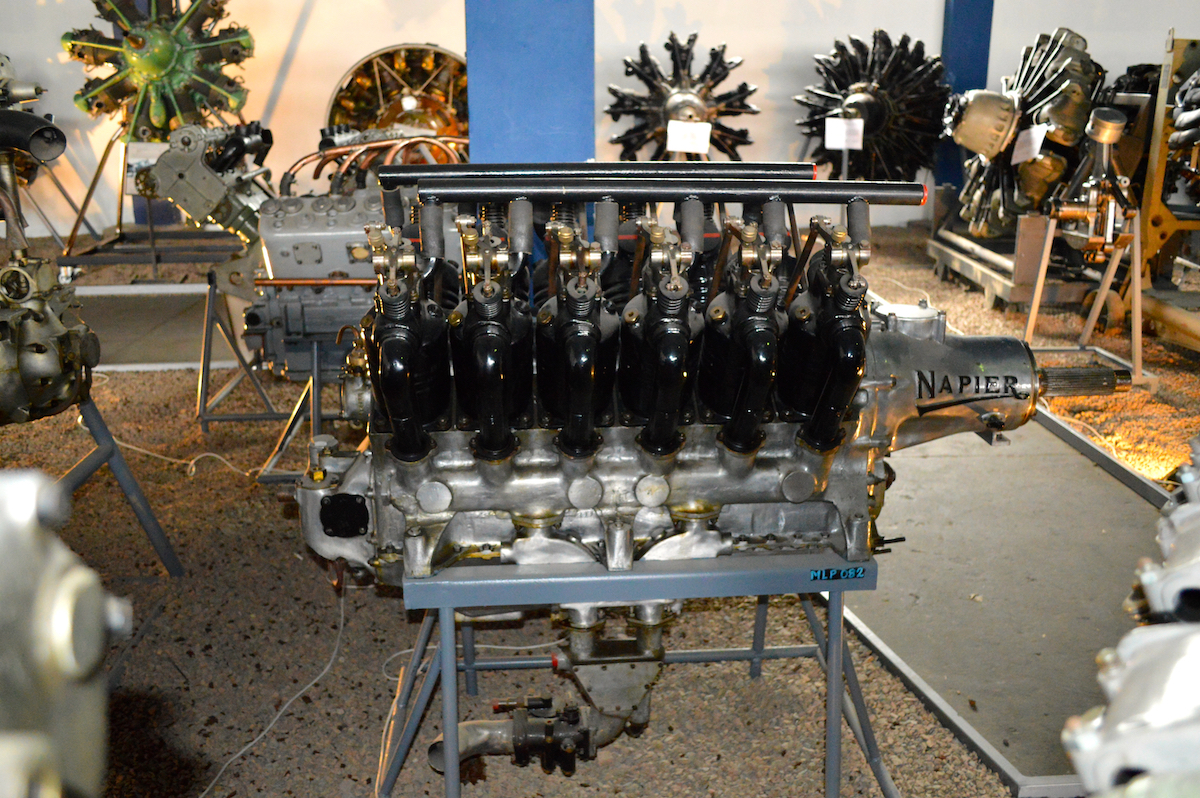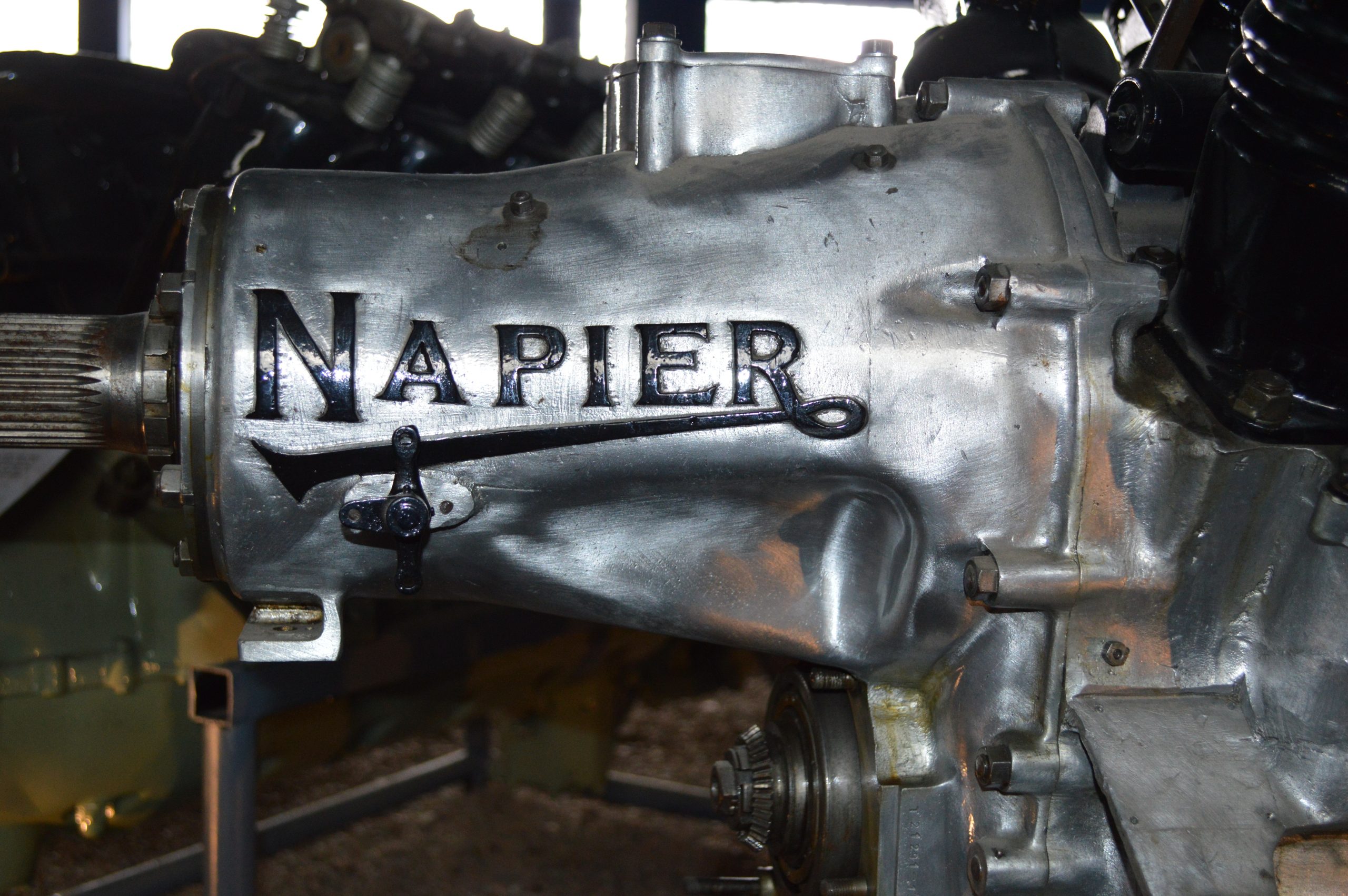The WW 1 Ministry Engines
Montague Napier pioneered early vehicle engines, being the first in 1903 to produce a 6 cylinder engine. The company also supplied a Napier petrol-engine for a dirigible balloon design dated 1902.
After the outbreak of WW1 the Ministry of Munitions had made the Napier Motor works a “Controlled Establishment”with priority given for the production of vehicles towards the war effort. This included trucks and vans for the Royal Flying Corps, as well as 6-cylinder ambulances for home airfields and then later for the Western Front. As a result of this work also commenced for the Royal Aircraft Factory in Farnborough, even the re-drafting of a new set of drawings under the Napier “E register” Number E56 for their RAF 3A engine. This was a 60 degree V-12 engine of which 260 were subsequently manufactured at the Napier Works.
The images below are of a beautifully preserved RAF 3A engine number 6613. Napier’s took pride in manufacturing engine for the War Department and applied their Napier logo on the gear case. This engine can be viewed at the fine Polish Aviation Museum in Krakow; it is the earliest known example of a Napier aero engine in existence.
It was then followed by the “rather suspect” 90 degree V-8 Sunbeam Arab engine allocated Number E63. This was a metric design which Napier apparently had re-drawn to Imperial with subtle improvements! The Company produced 300 of the Arab during 1917.
Montague considered both engines to be inferior and tried to convince the Ministry that he could design a much higher quality and better performing engine.





